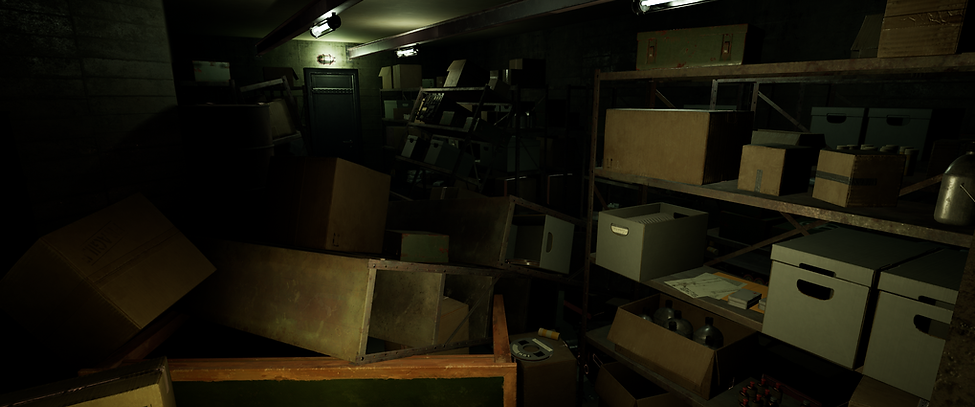shattered lights

Shattered Lights is a one-of-a-kind, VR room-scale, single-player horror game developed for the HTC Vive Pro in Unreal Engine 4 where players have to navigate an abandoned underground facility. Using a system of cleverly hidden teleports, this game is navigated entirely via player's physical movement and the controllers are never one used to move. To bring horror forward and create the best possible atmosphere, this game utilizes a step-by-step event system to make sure that the player is always at the edge of their seat.
Role(s): Lead Designer, Producer
Team Size: 19
Development Period: 10 months (ongoing)
Engine: Unreal Engine 4
Platform: PC (HTC Vive Pro, Oculus Rift)
Achievements/Learning Points:
-
Full development cycle from concept to release
-
Teamwork/management of a larger team
-
Level design within non-euclidean space
-
Application of agile to full cycle development
My Work & Achievements

2019
IGAD
Awards
Best Design
2019
IGAD
Awards
Best Audio
2019
IGAD
Awards
Best Game
Level Design
Within this project, I designed and built 6 levels, each of which consisted of numerous corridors and rooms. Because of the unique, teleport-based setup of our game, all rooms have to fit into a 3x3m playspace and accommodate an exit and entrance teleports. This made creation of many interactions and events difficult but has created unique and very engaging gameplay.
Technical Gameplay Design
Large part of my work on this project, was dedicated to crafting individual chains of events and gameplay moments for the game. This would involve quick prototyping, playtesting, iterations and final polish/bugfixing. All of these events were focused on creating tension, leading the player's attention and delivering scary but engaging gameplay.

Lead Design
My primary role with this project was Lead Designer. I was responsible for the completion and smooth progress of all design related work as well as interdisciplinary communication. This would involve working out pipelines, creating and managing the scope, updating and maintaining the backlog (agile development) and making sure our current work methodology was being utilized.
Documentation
Due to this being a long-term project with a larger team, it was important to make sure information got distributed quickly and efficiently. Because of this, especially in the concepting stage - I spent quite a bit of time working on one pager documents, the GDD, the level design bible, and other materials relevant to the game.


